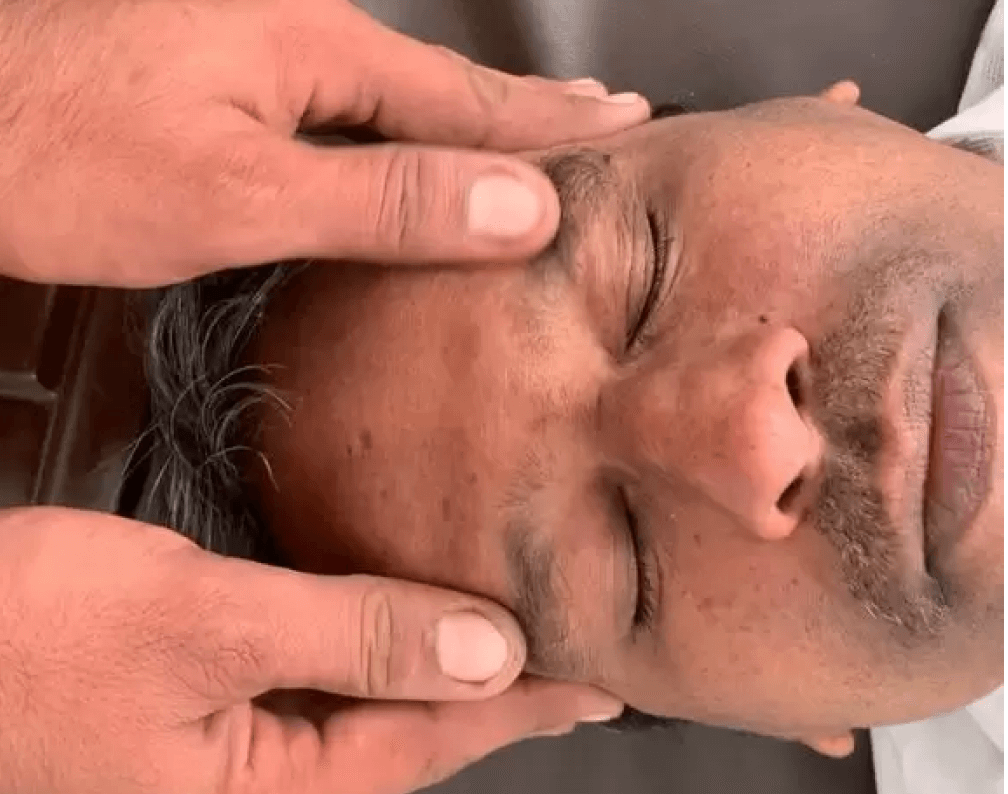Face Reflexology
Face Reflexology
Face reflexology, also known as Mukh Abhyangam in Ayurveda is a natural therapy that involves the application of pressure to specific reflex points on the face. It is based on the principle that the face reflects the body’s internal organs and systems, and by stimulating these reflex points, it is believed to encourage the body’s natural healing processes. Face reflexology is a non-invasive treatment that can be used to improve circulation, reduce stress, promote relaxation, and enhance overall well-being. It is a gentle yet powerful therapy that can be easily incorporated into your wellness routine.

Unlocking the Benefits of Face Reflexology: Promoting Holistic Healing
- Relieves stress and anxiety: Face reflexology helps to relax the mind and body, reducing stress and anxiety levels.
- Improves circulation: By stimulating the pressure points on the face, blood flow is improved, which helps to nourish and rejuvenate the skin.
- Relieves pain: Face reflexology can be used to relieve pain and tension in various parts of the body, including the head, neck, and shoulders.
- Boosts the immune system: By stimulating the lymphatic system, face reflexology can help to improve the body’s natural defense system.
- Improves skin health: The increased blood flow and lymphatic drainage from face reflexology can improve the appearance of the skin, reducing fine lines, wrinkles, and other signs of aging.
- Enhances relaxation: Face reflexology provides a deeply relaxing experience, leaving you feeling refreshed and rejuvenated.
- Supports overall health: Face reflexology can help to balance the body’s energy and promote overall health and well-being.
Regular face reflexology sessions can provide numerous benefits for the mind, body, and spirit.
Revitalizing Procedure: Step-by-Step Guide to Face Reflexology
- Preparation: The therapist will ensure that the client is comfortably seated or lying down, and the face is clean and free of any makeup or oils.
- Relaxation: The therapist will guide the client through some breathing and relaxation exercises to help them unwind and get into a receptive state.
- Mapping: The therapist will use a facial reflexology chart to identify the reflex points on the face and determine which areas need to be worked on.
- Stimulation: The therapist will use gentle pressure, massage, and tapping techniques to stimulate the reflex points on the face. They may use their fingers, knuckles, or specialized reflexology tools like a small wand or ball.
- Progression: The therapist will work on the reflex points in a specific sequence, gradually moving from one area to another, and adjusting the pressure and technique as needed.
- Closing: The therapist will end the session with some calming strokes, breathing exercises, or guided meditation

Yoga, Ayurveda & Naturopathy
Patanjali Wellness brings to you an integrated and complete health package.
WhatsApp us
